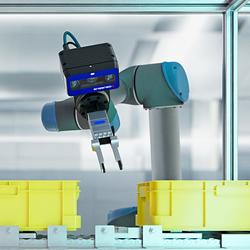CRAFT Program Aims for Affordable Designer Circuits that Do More with Less Power
Many systems could benefit from advances of the sort that CRAFT seeks to catalyze.
Demand for specialized integrated circuits for military electronics continues to surge exponentially with no end in sight. Systems that synchronize the activity of unmanned aerial vehicles; real-time conversion of raw radar data into tactically useful 3-D imagery; and instant access to high-resolution sensor feeds on the battlefield are only three examples of this reality. Despite the importance of these capabilities to national security, however, current circuit-design methods often result in devices that require more power than can be practically supplied on small flying platforms or on warfighters already burdened by too much battery weight.
Its not that engineers are incapable of designing custom integrated circuits that can perform a specific task with optimum power efficiency. It is, rather, that they are today stymied by the prospect of spending up to $100 million and working for more than two years to complete such a design. As a result, Defense Department engineers often turn to more generic, inexpensive, and readily available general-purpose circuits, and then rely on software to make those circuits run the required specialized operations. Using general-purpose circuits can speed up design and implementation, but also burdens electronic systems with unnecessary power-gobbling circuitry.
"This dilemma has reduced the use of custom-integrated circuits and, consequently, the performance of DoD systems," according to a just-published Broad Agency Announcement (BAA) in which DARPA invites the technical community to submit proposals for research that would help solve the problem. (DARPA-BAA-15-55, published on August 17, 2015, is available on FedBizOpps: http://ow.ly/QZPzX.) The three-phase program, Circuit Realization At Faster Timescales (CRAFT), is slated to last just over three years with total funding of about $30 million.
Overseen by Linton Salmon, a program manager in DARPAs Microsystems Technology Office (MTO), the CRAFT program seeks to develop new fast-track circuit-design methods, multiple sources for integrated circuit fabrication, and a technology repository that will facilitate reuse of proven solutions.
Many systems could benefit from advances of the sort that CRAFT seeks to catalyze. Consider, for example, the data- and computation-intensive "Gotcha" radar system that the Air Force Research Laboratory is developing to identify moving objects over city-scale areas and render detailed 3-D imagery. "Gotcha currently requires a land-based supercomputer to make sense of the radar data and convert it into tactically useful imagery. However, relaying the data to a remote supercomputer across a contested data link can cause crippling delays," Salmon explained. "The CRAFT program could help put more of the necessary computational power on the UAV itself or on the backs of warfighters, enabling quicker delivery of the imagery to those who need it most."
At the core of the CRAFT vision is an unprecedented ability to fabricate customized, technology-specific circuits using the 16 nanometer/14 nm commercial fabrication infrastructure that today produces generic commodity circuits. "A custom integrated circuit designed only to process images from an airborne radar or to analyze sensor data for warfighters on the ground doesnt need to run a spread sheet or a word processor," Salmon said. "Why carry around a heavy bulging Swiss Army knife when all you need is a single Phillips-head screwdriver?"
Being able to jettison the massive amounts of circuitry dedicated to everyday functions would allow the resulting spare capability to be devoted to crucial functions, Salmon continued. "In the end," he said, "you would have a top-of-the-line, custom-integrated circuit that does only the job you need and does so much more effectively."
To achieve its goals, CRAFT seeks to shorten the design cycle for custom integrated circuits by a factor of 10 (on the order of months rather than years); devise design frameworks that can be readily recast when next-generation fabrication plants come on line; and create a repository so that methods, documentation and intellectual property need not be reinvented with each design and fabrication cycle.
"If CRAFT is successful, design of custom integrated circuits will be far more readily available to those building DoD systems," Salmon said. "As a result, engineers will be able to make decisions based on the best technical solutions for the systems they are building, instead of worrying about circuit design delays or costs."
Featured Product

